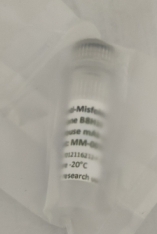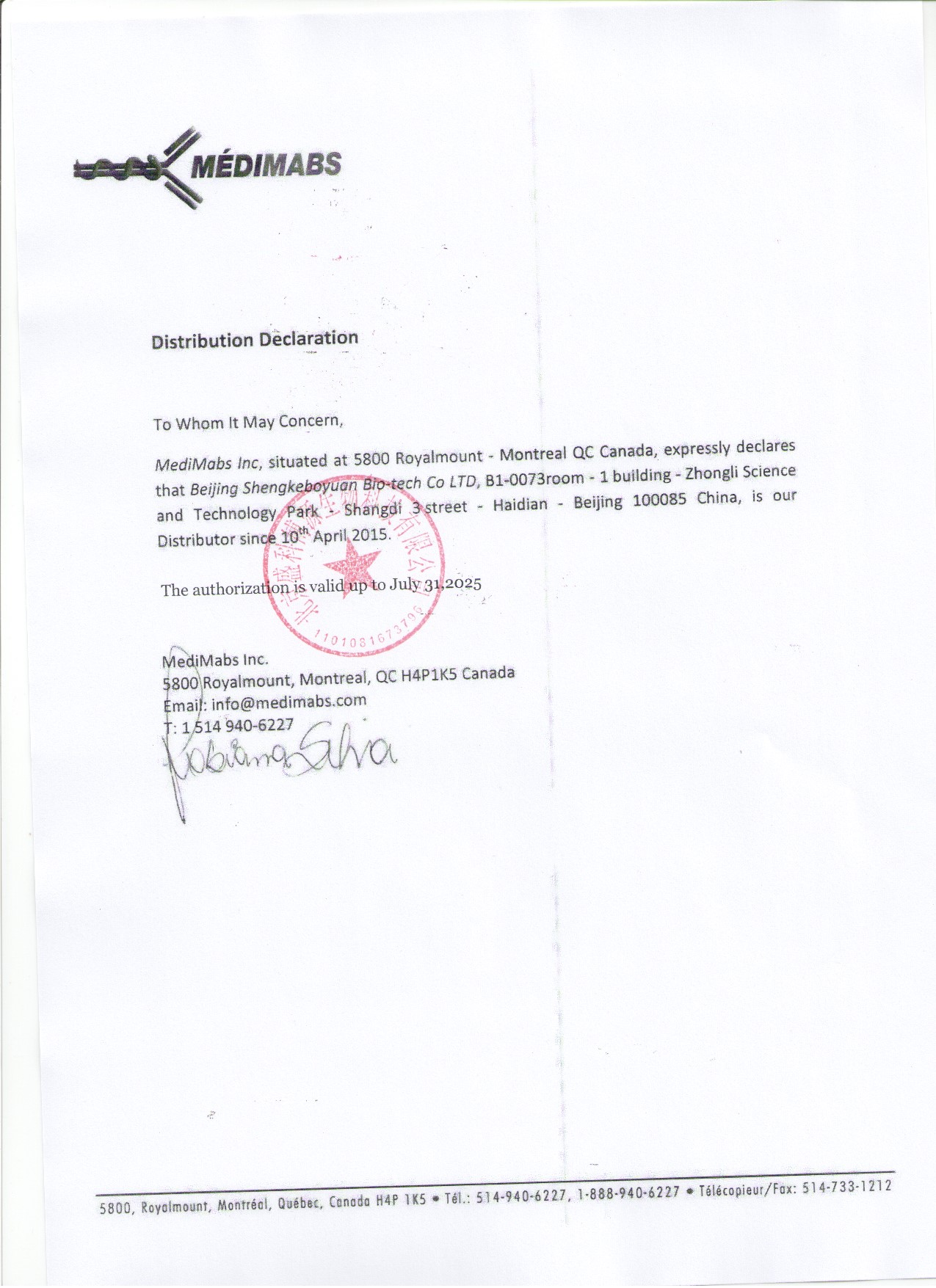 首页>
生物试剂
首页>
生物试剂
商家描述
商家资质信息
产品评价(0)
Target
Ahi-1
Target background
Abelson helper integration site 1 (Ahi-1) is highly expressed in the most primitive normal hematopoietic cells, in brain neurons and in kidney. Ahi-1 is a unique protein with a SH3 domain, multiple SH3 binding sites and a WD40-repeat domain, which are all known to be important mediators of protein–protein interactions. Defects in Ahi-1 are the cause of Joubert syndrome type 3 (JBTS3).
Target alias
anti-ahi-1, anti-ahi 1, anti-ahi1, Jouberin , Abelson helper integration site 1 protein , AHI-1
Specificity
A specific and sensitive antibody against Ahi-1. The antibody recognizes the C-terminal of the murine Ahi-1. There is no cross-reactivity with human Ahi-1
Clone ID
J5
Isotype
IgG1
Preservative
None
Format
Purified with protein G, stored in PBS pH 7.4 and lyophilized.
Recommend starting dilution
If reconstituted with deionized water in 100µL: WB 1-2 µg/ml; IP 1-2 µg of antibody to 200-600 µg of proteins; IHC 1-5 µg/ml. Optimal dilution has to be determined by the user.
Limitations
Research Use Only
Storage
Lyophilized antibodies can be kept at 4ºC for up to 3 months and should be kept at -20ºC for long-term storage (2 years). To avoid freeze-thaw cycles, reconstituted antibodies should be aliquoted before freezing for long-term (1 year) storage (-80ºC) or kept at 4ºC for short-term usage (2 months). For maximum recovery of product, centrifuge the original vial prior to removing the cap. Further dilutions can be made with the assay buffer. After the maximum long-term storage period (2 years lyophilized or 1 year reconstituted) antibodies should be tested in your assay with a standard sample to verify if you have noticed any decrease in their efficacy. To limit antibody loss or degradation, BSA (final concentration 1%) and sodium azide (final concentration 0.02%) can be added to the suggested first dilution. It is important to first verify if those preservatives are compatible with your assay.
 会员登录
会员登录.getTime()%>)
 购物车()
购物车()

 成功收藏产品
成功收藏产品
